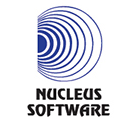
Treasury Liquidity Management Solutions: Liquidity management ensures that a company has the appropriate cash and other liquid assets to meet its financial obligations. This includes managing cash inflows and outflows, optimizing cash balances, and monitoring and forecasting liquidity needs. Effective liquidity management is critical for any business’s financial health and sustainability, particularly during economic uncertainty.
One trend that has emerged in liquidity management in recent years is the use of technology. Technology advancements have enabled businesses to automate many aspects of their cash management processes, including cash forecasting, bank account reconciliation, and payment processing. This has allowed companies to more accurately forecast their cash flows and optimize their liquidity positions, improving their ability to meet financial obligations.
Another trend in liquidity management is the increasing use of alternative funding sources. Due to increased regulatory scrutiny and a more cautious lending environment, traditional funding sources, such as bank loans and lines of credit, have become more difficult to obtain in recent years. As a result, businesses are turning to alternative funding sources, such as private equity, venture capital, and crowdfunding, to meet their liquidity needs.
The outlook for liquidity management is likely to be shaped by several factors – inflationary pressures, economic distress, rising competition, and margin compression.
At the same time, technological advances are likely to continue transforming liquidity management. For example, artificial intelligence and machine learning will likely play an increasingly important role in cash forecasting and optimization, enabling businesses to predict their cash flows more accurately and optimize their liquidity positions.
Liquidity management is critical for the financial health and sustainability of any business. In the face of ongoing economic uncertainty and volatility, companies must remain agile and adapt quickly to changing market conditions to maintain financial stability. In addition, technological advances and the increasing use of alternative funding sources will likely shape the future of liquidity management in the coming years.
Treasury Liquidity Management Solutions:
Liquidity management platforms are software tools that help businesses manage their cash and liquidity positions. These platforms offer features and functionality to enable enterprises to optimize their cash balances, forecast their cash flows, and manage their liquidity risks. Some of the core features and functionality of liquidity management platforms include:
Cash forecasting: Liquidity management platforms often include tools for forecasting cash inflows and outflows, enabling businesses to predict their future liquidity needs more accurately. These tools may use historical data, market trends, and other factors to generate cash flow forecasts that can be used for short-term and long-term planning.
Cash optimization: Liquidity management platforms may also include tools for optimizing cash balances and minimizing idle cash. These tools may recommend investment options or suggest ways to move excess money to higher-yield accounts, helping businesses maximize their returns while maintaining sufficient liquidity.
Bank account management: Liquidity management platforms may offer features for managing multiple bank accounts, consolidating account information, and reconciling transactions. These features can help businesses streamline their cash management processes and reduce manual errors.
Liquidity risk management: Liquidity management platforms may also include tools for managing liquidity risks, such as monitoring concentration risk, stress testing cash positions, and identifying potential cash flow gaps. These tools can help businesses prepare for unexpected liquidity events and mitigate the impact of financial shocks.
Integration with other systems: Liquidity management platforms may integrate with other financial systems, such as enterprise resource planning (ERP) systems, treasury management systems (TMS), and accounting software. This can help businesses streamline their financial operations and improve data accuracy.
Reporting and analytics: Liquidity management platforms may offer reporting and analytics tools to help businesses monitor their cash and liquidity positions and track key performance indicators (KPIs). These tools can provide insights into cash flow trends, identify areas for improvement, and support decision-making.
Liquidity management platforms can help businesses improve their cash and liquidity management processes, reduce risks, and optimize their cash balances. These platforms’ specific features and functionality can vary depending on the provider and the business needs.
Technology and Architecture of Modern Liquidity Management Platforms:
Modern liquidity management platforms typically have a cloud-based architecture that enables businesses to access the platform from anywhere at any time. In addition, these platforms usually use a combination of software as a service (SaaS) and application programming interfaces (APIs) to provide a seamless user experience and integrate with other financial systems.
The architecture of modern liquidity management platforms may include the following components:
Front-end user interface: The platform’s front-end is the user interface businesses use to access the platform’s features and functionality. This interface may be accessible via a web browser, mobile app, or desktop application. For example, the front end may include dashboards, reports, and analytics tools to help businesses monitor their cash and liquidity positions.
Application server: The application server is the component of the platform that processes user requests and manages the solution’s business logic. This server may be hosted in the cloud or on-premises, depending on the provider and the needs of the business.
Database: The database is where all the platform’s data is stored, including user information, transaction data, and historical cash flow data. Depending on the provider and business needs, the database may use a relational database management system (RDBMS) or a NoSQL database.
API gateway: The API gateway is the platform component that manages the APIs that integrate with other financial systems. Depending on the provider and business needs, the API gateway may use a RESTful API architecture or another API architecture.
Security: Modern liquidity management platforms typically have solid information and cyber security features, including data encryption, access controls, and monitoring tools to detect and respond to potential security threats.
Integration with other financial systems: Liquidity management platforms may integrate with other financial systems, such as ERP systems, TMS, and accounting software. These integrations may use APIs, file transfers, or other data exchanges between systems.
Overall, the architecture of modern liquidity management platforms is designed to provide a flexible, scalable, and secure platform that businesses can use to manage their cash and liquidity positions effectively. The specific architecture of these platforms may vary depending on the provider and the company’s needs.
Treasury Liquidity Management Solutions by Banks:
Banks should offer liquidity management services to their business customers for several reasons. First and foremost, offering liquidity management services can help banks attract and retain business customers by providing them with a valuable service that can help them manage their cash and liquidity positions more effectively. This can help increase customer loyalty and reduce customer churn.
Secondly, offering liquidity management services can help banks generate new sources of revenue. Many liquidity management services, such as cash forecasting and optimization, can be charged on a subscription or transactional basis, providing banks with a new revenue stream. This can help offset the impact of low interest rates and other factors that may reduce traditional banking services’ profitability.
Thirdly, offering liquidity management services can help banks differentiate themselves from their competitors. In a crowded banking market, offering value-added services such as liquidity management can help banks stand out and attract new business customers. This can help increase market share and drive growth.
Fourthly, offering liquidity management services can help banks deepen their relationships with their business customers. Banks can gain deeper insights into their customers’ financial needs by providing liquidity management services and developing more tailored products and services to meet those needs. This can help strengthen customer relationships and improve customer satisfaction.
Finally, offering liquidity management services can help banks improve their liquidity management processes. By providing liquidity management services to their customers, banks can better understand their customers’ cash flows and liquidity risks, which can help them manage their own liquidity positions more effectively. This can help reduce the risk of liquidity shocks and improve the bank’s overall financial health.
Criteria for evaluating and selecting Treasury Liquidity Management Solutions:
When evaluating and selecting a liquidity management solution, there are several criteria that businesses should consider to ensure that the solution meets their needs effectively. Some of the critical criteria are the following:
Functionality: The solution should provide the necessary functionality to meet the business’s liquidity management needs. This includes cash forecasting, optimization, bank account management, and liquidity risk management.
Integration capabilities: The solution should be able to integrate with other financial systems that the business uses, such as ERP systems, TMS, and accounting software. This can help streamline financial operations and improve data accuracy.
User experience: The solution should be easy to use and provide a seamless user experience. This can help ensure that the solution is adopted by users and used effectively.
Security: The solution should have robust security features, such as data encryption, access controls, and monitoring tools, to protect sensitive financial information.
Scalability: The solution should be scalable to accommodate the business’s changing liquidity management needs over time. This includes handling increasing transaction volumes and supporting new features and functionality as required.
Flexibility: The solution should accommodate the business’s unique liquidity management requirements, including different currencies, payment types, and payment methods.
Pricing: The solution should be affordable and provide good value for money. This includes considering factors such as subscription fees, transaction fees, and implementation costs.
Support and training: The solution provider should offer comprehensive support and training to ensure the business can use the solution effectively and troubleshoot any issues.
Overall, evaluating and selecting a liquidity management solution requires careful consideration of various factors, including functionality, integration capabilities, user experience, security, scalability, flexibility, pricing, and support and training. By carefully evaluating these criteria, businesses can choose a liquidity management solution that meets their needs effectively and helps them optimize their cash and liquidity positions.












